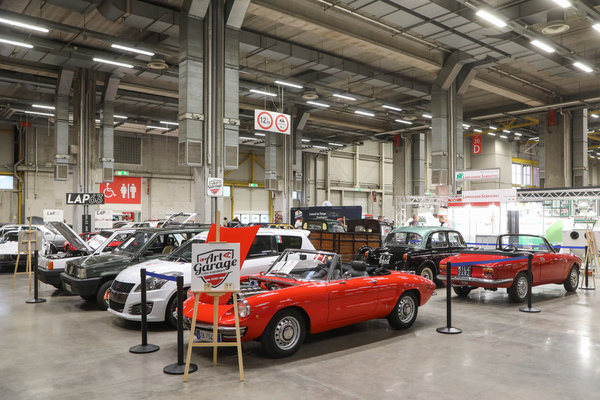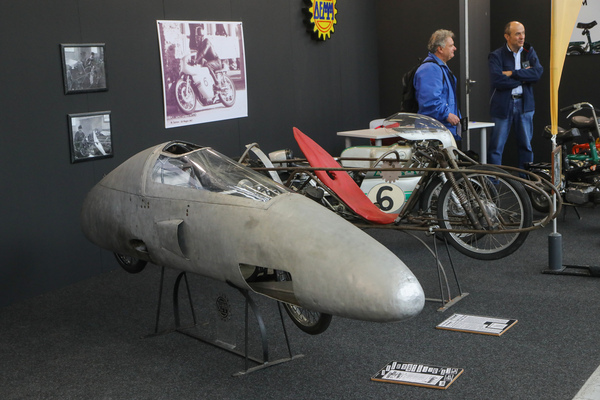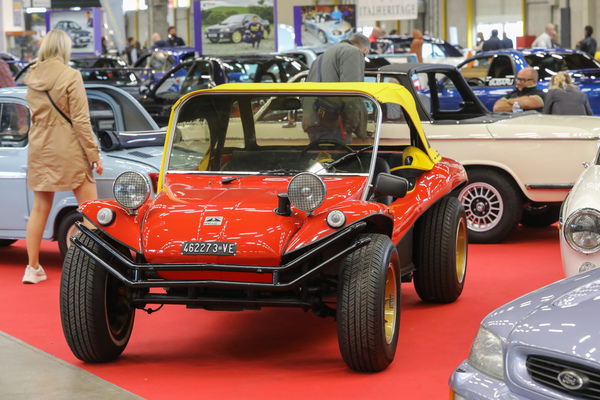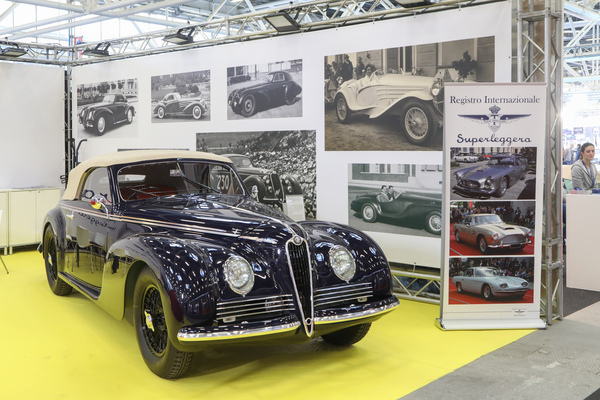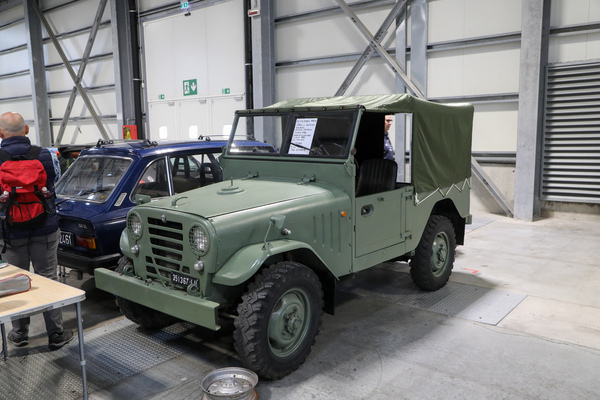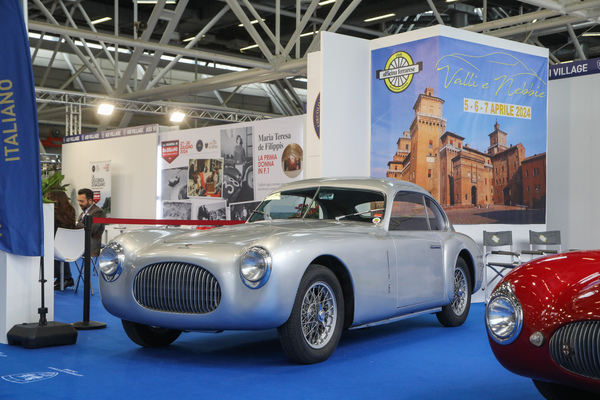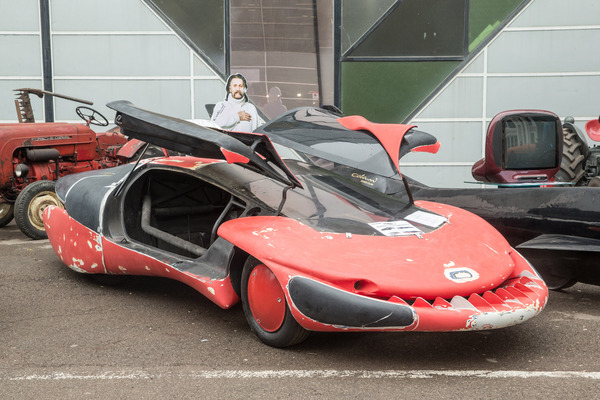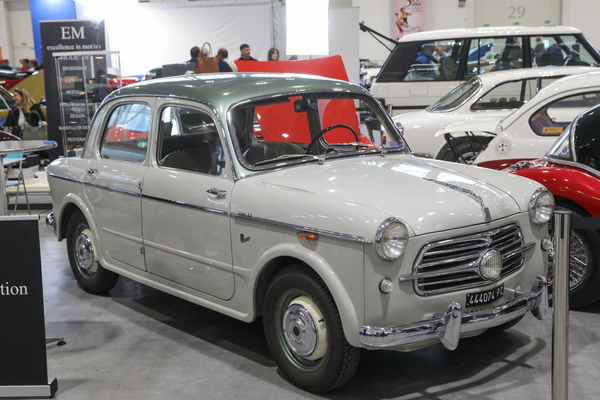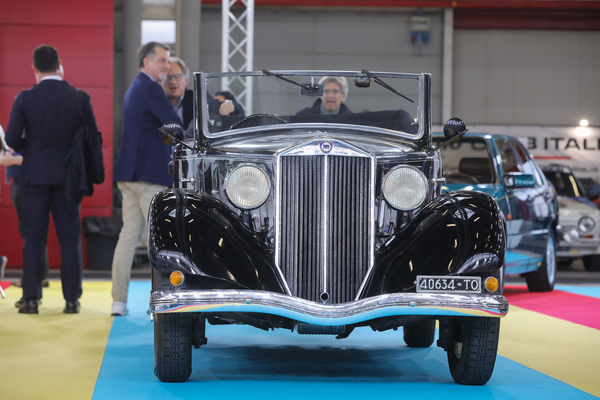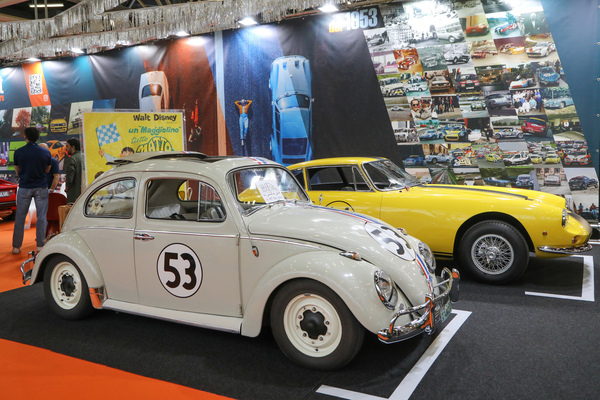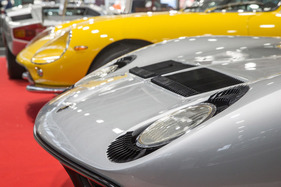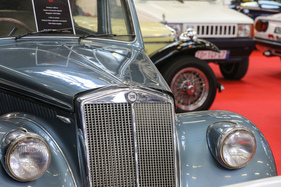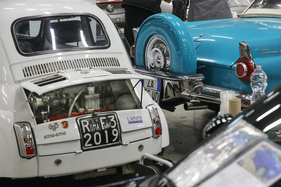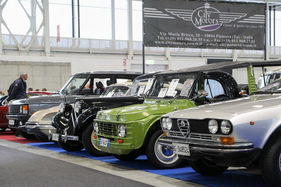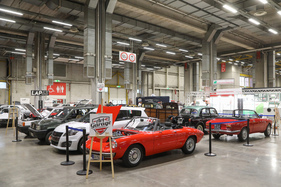Bigger, more modern, more practical, simply better - this is how Auto e Moto d'Epoca was announced for October 26 to 29, 2023. The popular Italian classic car trade fair moved from Padua to Bolgona for its 40th edition. A much more modern trade fair infrastructure is available there, and the exhibition space has roughly doubled to 250,000 square meters.

Classic car fans tend to be conservative people, and they naturally wondered whether Auto e Moto d'Epoca would still be attractive with the growth and disappearance of the Paduan "shabby chic" ...
A beautiful trade fair
Well, let's get this out of the way. The 40th Auto e Moto d'Epoca was an attractive trade fair, without "ifs and buts". The modern halls with their visible building structures are interesting backgrounds for the old vehicles. The additional space was put to good use, giving the special exhibitions more room and clarity.

Well, there were significantly fewer cars outside than in previous years, but that cannot be seen as a disadvantage, even if the temperatures outside the halls were also pleasant.
Navigation problems in the small
The "Fiera di Bologna" is easy to reach, whether by public transport or by car. The navigation system leads almost directly from the highway tollbooth to the exhibition halls. There are plenty of parking spaces within a relatively short walking distance of the exhibition halls.
If you had any navigation problems at all, it was in the halls rather than outside them. In fact, you had to find your way around for the first time after entering and plan your route through the 12/14 halls so that you didn't miss anything.

The trade fair organization had specially defined four themes, namely "Cars", "Spare Parts", "Motorcycles" and "The World of Classic Cars". Anyone interested in just one of the themes could go directly to the relevant halls. For the first time, there was an entire hall exclusively for motorcycles, while the car section comprised five (or six, if you count the "Mall" as a separate hall) halls.

However, the "World of Classics" also primarily dealt with car-specific topics.
Moving through the halls, it was not easy to keep track of everything. Some visitors went in the wrong direction in search of a topic and only found out when they had reached the wrong place after a few hundred meters. However, a glance at the map usually helped.
The days of the museums
There was no shortage of special exhibitions in Bologna, even dealers sometimes made an effort to create thematic compositions, such as the two main characters in the film "The Love Bug" with the VW 1200 Beetle and the Apollo GT alias Thorndyke Special.

The largest special show in terms of area, however, was organized by European museums, which presented special exhibits in an extremely accessible way and with plenty of space around them.

For example, you could see Ferrari 312 T5 by Gilles Villeneuve from 1980 or the Maserati 26B from 1928.
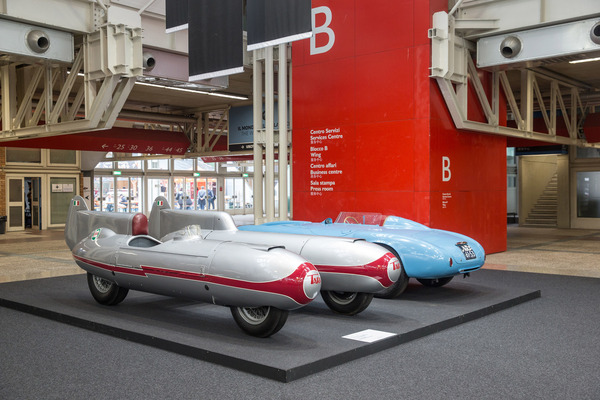
The aerodynamically optimized Bugatti Type 251 from 1955, the Lancia D23 from 1953 and the twin-hulled Tarf I and II racing cars were also impressive.
History of the Targa Florio
Another special show was dedicated to the Targa Florio. Winning and participating vehicles such as the Alfa Romeo 33 TT 12 from 1975, which won the Targa with Merzario and Vaccarella at the wheel, were on display here.

Also victorious in Sicily were the Alfa Romeo RL from 1923 and the Lancia Augusta Berlina Lusso from 1934, which won in 1936.

The beautifully presented exhibition was supported by many historical photos in the background of the vehicles.
Technical and visual extravaganzas
With so many cars - there are said to be more than 4000 vehicles - there are of course a few examples at the Auto e Moto d'Epoca every year that stand out from the crowd.

For example, there was a Ford dressed up by Colani, which set a speed record of 470 km/h with a seven-liter V8 and 1000 hp ... and still looks very fast today.

A few steps further on, we came across the "Monaco Trossi", a monoposto that competed in the 1935 Monza Grand Prix. Its special feature was a front-mounted two-stroke, sixteen-cylinder radial engine with cylinders arranged in two rows. The air cooling and design were reminiscent of an aircraft engine. The front-wheel drive was also unusual for the time.

A vehicle in another hall was much newer, a Covini C6W Evolutione from 2008 (first presented in 2005). The mid-engine sports car was powered by an Audi S4 V8 engine with 480 hp. The special feature, however, was the four steerable front wheels, which were intended to provide more comfort and a lower front end, but at the same time minimized the available footwell.

There were also interesting motorcycle designs on display, such as the Henderson Four from 1914, which featured a longitudinally mounted four-cylinder engine, or the Bianchi 500 from 1938, which combined a transversely mounted four-cylinder engine with a supercharger.

Many young cars
If you wandered through all the halls and quickly covered four to ten kilometers, you noticed the strong presence of young and sometimes even new cars at Auto e Moto d'Epoca 2023.

This trend is not entirely new, especially as more and more new classics are being offered at auctions. Nevertheless, not all visitors to classic car shows like these young vehicles.

There was even a new car presentation (Alfa Romeo 33) on the FCA stand, but there were also many young vehicles on other stands and especially at the dealers. And we're not talking about youngtimers like a Porsche 996 or a Ferrari F355, but cars that have only recently left the factory.
Pane e Burro ...
Of course, as every year at the Auto e Moto d'Epoca in Bologna, there were also many former everyday cars to see (and buy).

From the Fiat Panda, which has just become a cult classic and could be admired in many different versions and even as an original model, to a large number of Volkswagens, the Renault 4 or Peugeot 203 and, of course, various Fiat, Alfa, Lancia and Autobianchi models, everything was there to bring back memories of the good old days.

There was a whole selection of versions and colors of the Fiat 600 Multipla, which is actually not built very often.
... and typical Italian specialties
Also typical of the Italian motor show are the many special bodies that were built 50 or more years ago on chassis that were popular at the time (Fiat 500, Fiat 850, Fiat 600, etc.).

What the sheet metal artists created back then is still absolutely admirable today.
K(l)one prices?
In view of rising interest rates, huge volumes of credit and global crises, one would assume that classic car prices are visibly beginning to fall. However, this was not the impression one got in Bologna, as some of the cars were almost astronomically expensive, while the rarer and more special cars in particular were exhibited without a price in many cases. This may give dealers more room to maneuver, but it is annoying for visitors, as it makes their exploratory tours much more time-consuming.

In any case, anyone who wanted to get a quick overview of how expensive a particular vehicle category is today did not reach their destination efficiently at Auto e Moto d'Epoca. A pity, really.
With attention to detail
But you don't just go to a classic car show to research prices.

For many visitors, it is simply important to take a look at the automotive past. And here it was above all the many attractively designed club stands that together offered an almost universal museum of Italian car history (and beyond).

Many clubs were united in the ASI Village, for example, and anyone who wanted to better understand what has been lost to us in terms of classic brands in recent decades had plenty to see here.
New brands
The Motor Valley, the automotive region in Emilia-Romagna, so to speak, was given its own area at the trade fair's new location and offered an interesting cross-section of local creativity.

The vehicles of Horacio Pagani, whose super sports cars are now also approaching the classic car age, were on display for the first time.

At Lamborghini's Polo Storico, a restored early Countach and an Espada in progress were on display.

But elsewhere, too, new brands that had hardly been seen in Italy before were making frequent appearances. Subaru, for example, was represented with a whole horde of rally derivatives.
Pure Italianità in the catering
But at the latest when you got hungry or thirsty, you were completely back in Italy. Good coffee, fine cured ham, great sweets and many a typical dish turned a visit to the trade fair into a culinary experience, and the waiting times were bearable, at least on Thursday.
Tired, full of impressions
The cell phone counter recorded over 17,000 steps at the end, which means that visitors can walk over ten kilometers in one day at the fair. It's almost a little overwhelming with so many classics in one place.

Three Dino 246 GT/GTS in a row? No exception in Bologna. Half a hall with a dealer's range and probably over 150 vehicles, no problem for "Ruote da Sogno".
In the end, it is difficult to pick out anything that particularly impressed you.

Were these the two early Alfa Romeo Alfasud that miraculously escaped the rust devil?

Or was it the Buckler DD2 from 1960, practically unknown in this country, with a Coventy Climax engine and tubular frame chassis from England, whose body was made of plastic and largely manufactured by Microplas?

Or was it the wonderful cars from Cisitalia or the many Alfa Romeo 6C 2300/2600? Or the elegant Osca?

Or was it the Lancias Aurelia B20 GT with racing patina? Or the Fiat 600 as a Monterosa Coupé?
We leave the choice to our readers and show in our comprehensive picture gallery with over 300 photos what we noticed while strolling through the halls.





